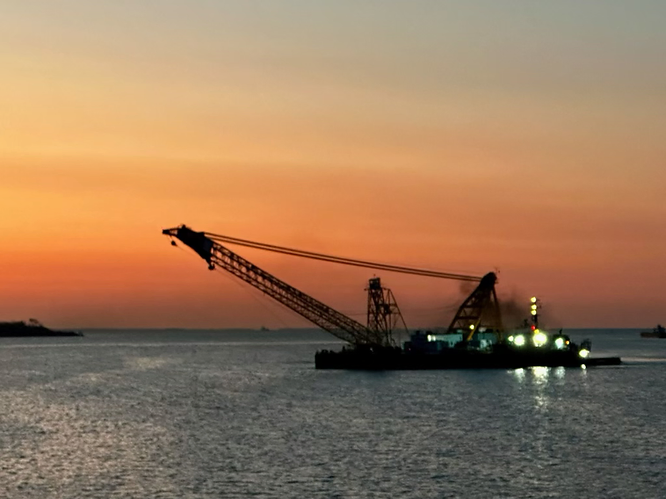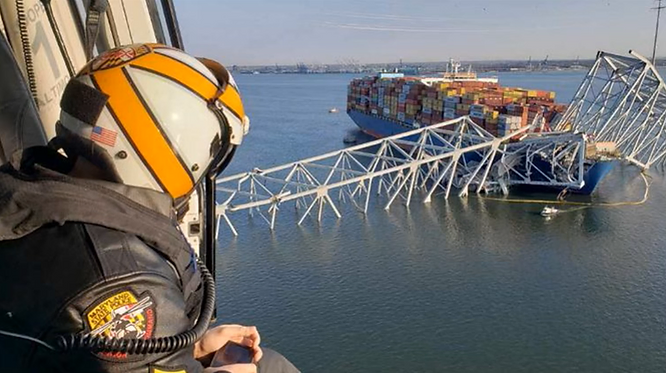BALTIMORE, MD – Operations are intensifying following the collapse of the Francis Scott Key Bridge, with a significant response effort coordinated by the Unified Command.
The operation saw the arrival of the Chesapeake 1000 crane barge at the collapse site at 6 a.m., marking the beginning of a large-scale response. Over the next five days, the Unified Command plans to bring an additional seven cranes, ten tugs, and nine barges to assist with the efforts.
Engineers within the Unified Command are currently evaluating the situation to formulate a salvage plan that is both safe and effective. Environmental protection measures are a priority, with the latest overflight indicating no new sheen in the surrounding waters.
To mitigate environmental impact, 2,700 feet of sorbent boom and a similar length of hard containment boom have been deployed around the M/V Dali. Additionally, 16,000 feet of boom is ready for use if needed, ensuring readiness for any escalation in preventive measures.

Currently, there are no advisories from the Maryland Department of the Environment affecting the consumption of locally caught fish, crabs, and shellfish.
For safety, a 2000-yard zone around the M/V Dali salvage operation and a Temporary Flight Restriction have been established. These measures are enforced to protect both the salvage personnel and the marine environment.
Travel disruptions continue, with I-695 closed at specific exits and alternative routes suggested via I-95, I-895, and other sections of I-695. Special guidelines are in place for vehicles carrying hazardous materials around the affected area.

